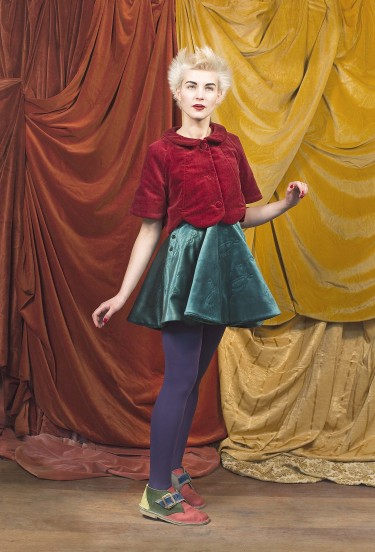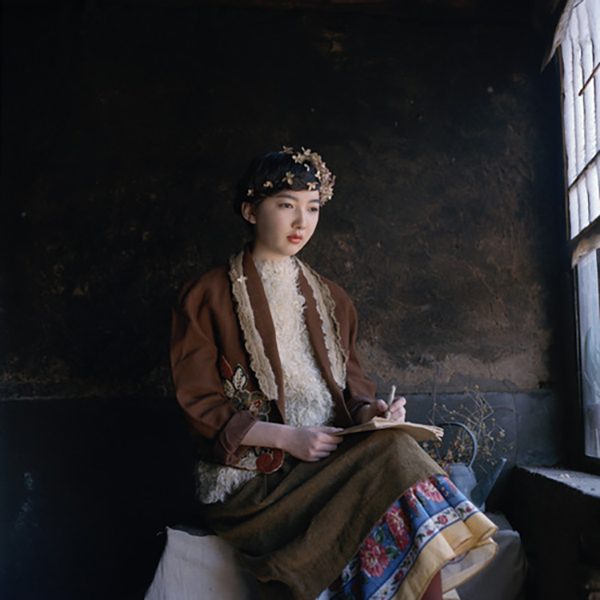
Lu Flux
Lu Flux is a delightfully playful and eccentric women’s wear collection based on British eccentricity, and a love of traditional techniques combined with modern design.

Momo Wang’s Third-Hand UpCycle Collection is a wonderful, brilliantly colored creative experimentation in repurposing found materials. Embracing the challenges inherent in upcycling, Wang revels in refreshing, renewing, and reanimating precious second hand materials, to expose their inherent beauty and value. Through careful selection and incongruous placement Wang manages to create a raw, naive, folkloric aesthetic, that honors fabric as a precious commodity, and respects the tradition of reuse through the make do and mend philosophy of our pre fast fashion era.
The inspiration for Wang’s 12-piece collection comes from French philosopher Derrida, famous for developing a form of semiotic analysis known as deconstruction. Wang’s collection is never the less a reconstruction of second hand materials and clothing from the flea markets of her hometown in Jinzhou, China. Embracing traditional patchwork, quilting, indigo dyes and retro wallpaper and table cloth like prints, her collection defies categorization and meanders effortlessly through a whole world of folkloric costume references and craft skills. The mélange of looks, textures, colors, proportions and volume are reminiscent of the Brothers Grimm retold through a myriad of cultural lenses.
A recent graduate of Central Saint Martins, her folk inspired clothing is a whimsical take on reinvention and revalue. Her detail-laden reconstructions include hand crochet seams, and blanket stitched patchwork, as well as knit and embroidery decoration and piecing. Recalling her recent experiences at CSM, Wang found herself less competitive than her peers and disadvantaged in using the resources. CSM is renowned for its ‘take no prisoners’ approach to learning, leading Wang to fail her first two projects. Considering quitting school at the time, Wang instead took the summer to research, practice and study, visiting the library daily. Returning to school prepared and ready for the first project, Wang went onto excel instead of fail.
Uninterested in fame and fortune, Wang completed her collection at the dining room table with the support of her mother. She is not interested in large companies, market trends, and instead is enjoying her naivety and freshness without the constraints of negotiating a commercial success. Future considerations include a possible return to China, and the hope of learning the folk art and craftsmanship of more remote areas. With 56 different races, each with their own heritage and craftsmanship, Wang wants to experience all she can before much of it disappears.
Wang’s ceramicist father, is both her inspiration and teacher. His porcelain work augmented her final collection. Wang believes fashion is her destiny, stemming from a letter written by her mother when she was pregnant, that expressed hope that a girl child might be a fashion designer. Fulfilling her destiny, Wang clearly derives great pleasure from seeing others enjoy and wear her designs, recalling the hand made clothes her mother lovingly made for her as she grew up in her small rural village in the mountains.
Video: http://vimeo.com